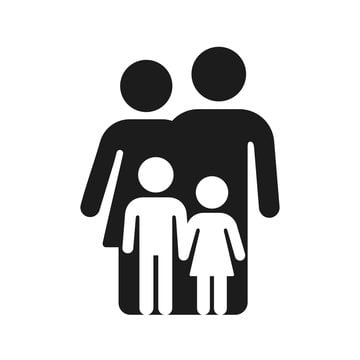The Foundation of Learning: How Effective Communication Builds Strong Teacher-Student Relationships
A thriving learning environment hinges on strong teacher-student relationships. These relationships aren't built overnight; they require consistent effort and a deliberate focus on effective communication. Communication acts as the bedrock, fostering trust, mutual respect, and a shared understanding crucial for academic success and student well-being. This article delves into the critical role of communication in cultivating these essential bonds, offering practical strategies for educators to enhance their communication skills and create a more positive and productive classroom.
Active Listening: The Cornerstone of Understanding
Active listening is paramount. Truly hearing your students—their thoughts, concerns, and perspectives—demonstrates respect and value. Let them fully express themselves without interruption, offering thoughtful feedback that confirms your understanding. This creates a safe space for open dialogue and strengthens the teacher-student connection.
Beyond Words: The Power of Nonverbal Communication
Communication transcends spoken words. Nonverbal cues—facial expressions, body language, and gestures—significantly impact how your message is received. A warm smile, a reassuring nod, or maintaining eye contact can foster a sense of connection and understanding far more effectively than words alone. Be mindful of your own nonverbal cues, ensuring they project empathy and approachability.
Transparency and Trust: Open and Honest Communication
Encourage open and honest communication from your students by modeling the same behavior. Create a classroom environment where students feel comfortable sharing their thoughts and concerns, knowing they'll be heard without judgment. This reciprocal honesty builds trust, a fundamental element of any strong relationship.
Empathy: Walking in Your Students' Shoes
Empathy is crucial. By actively trying to understand your students' feelings and experiences from their perspective, you build deeper connections and provide more effective support. This understanding allows you to address their individual needs more effectively, fostering a sense of care and concern.
Clear Expectations: Setting the Stage for Success
Clearly defined expectations regarding behavior, assignments, and classroom rules are vital. Communicate these expectations transparently, providing ample guidance and support to help students meet them. This clarity fosters a structured learning environment, reducing confusion and promoting a sense of order.
Positive Reinforcement: Nurturing Growth and Confidence
Recognize and celebrate student achievements, no matter how small. Positive reinforcement motivates and encourages continued effort. Praise their hard work, unique talents, and individual strengths. Sincere acknowledgment builds self-esteem and strengthens the teacher-student relationship.
Two-Way Communication: A Collaborative Learning Process
Effective communication is a two-way street. Encourage active participation in class discussions, inviting questions and open expression of ideas. This collaborative approach enhances the learning experience while simultaneously strengthening the bond between teacher and student.
Individualized Attention: Recognizing Unique Needs
Every student is unique. Take the time to get to know each student individually, showing genuine interest in their lives, hobbies, and aspirations. This personalized attention creates a sense of belonging and makes each student feel valued and respected.
Leveraging Technology: Enhancing Communication in the Digital Age
Technology offers powerful tools to enhance communication. Utilize online platforms, discussion forums, instant messaging, or educational apps to engage with students beyond the classroom. These tools facilitate continuous communication and provide opportunities for personalized feedback.
Conflict Resolution: Navigating Challenges Constructively
Disagreements are inevitable. Address conflicts promptly and constructively, using active listening, empathy, and compromise to find solutions. This approach maintains a positive classroom atmosphere and demonstrates your commitment to resolving issues fairly.
Parent Involvement: Building a Collaborative Support System
Strengthen teacher-student relationships by involving parents. Regular communication about student progress, challenges, and achievements fosters a collaborative approach to education, creating a stronger support system for the student's overall development.
The Power of Humor: Creating a Positive Learning Environment
Appropriate humor can significantly lighten the mood and create a more enjoyable learning experience. Shared laughter builds rapport and strengthens connections, making the classroom a more welcoming and engaging space.
Body Language Awareness: Communicating Nonverbally
Be mindful of your own body language. Maintain an open posture, avoid closed-off stances, and use appropriate facial expressions to convey warmth and approachability. Your nonverbal communication significantly impacts how students perceive and respond to you.
Reflective Listening: Ensuring Understanding and Validation
Reflective listening—paraphrasing and summarizing to confirm understanding—demonstrates that you value your students' input. This technique deepens communication and strengthens the teacher-student bond by ensuring everyone feels heard and understood.
Regular Feedback: Guiding Students Towards Success
Provide regular, constructive feedback on student progress, assignments, and performance. Feedback should be specific, encouraging, and focused on both strengths and areas for improvement. This fosters growth, accountability, and a sense of ongoing support.
Conclusion: Cultivating Lasting Connections
Effective communication is the cornerstone of strong teacher-student relationships. By consistently practicing active listening, utilizing diverse communication methods, and fostering a culture of open dialogue, you create an environment where students feel valued, supported, and motivated to learn. Remember, effective communication is a continuous journey, and ongoing refinement of these skills leads to richer, more meaningful teacher-student relationships that positively impact learning outcomes and student well-being. What communication strategies have you found most effective in building strong relationships with your students?
```



